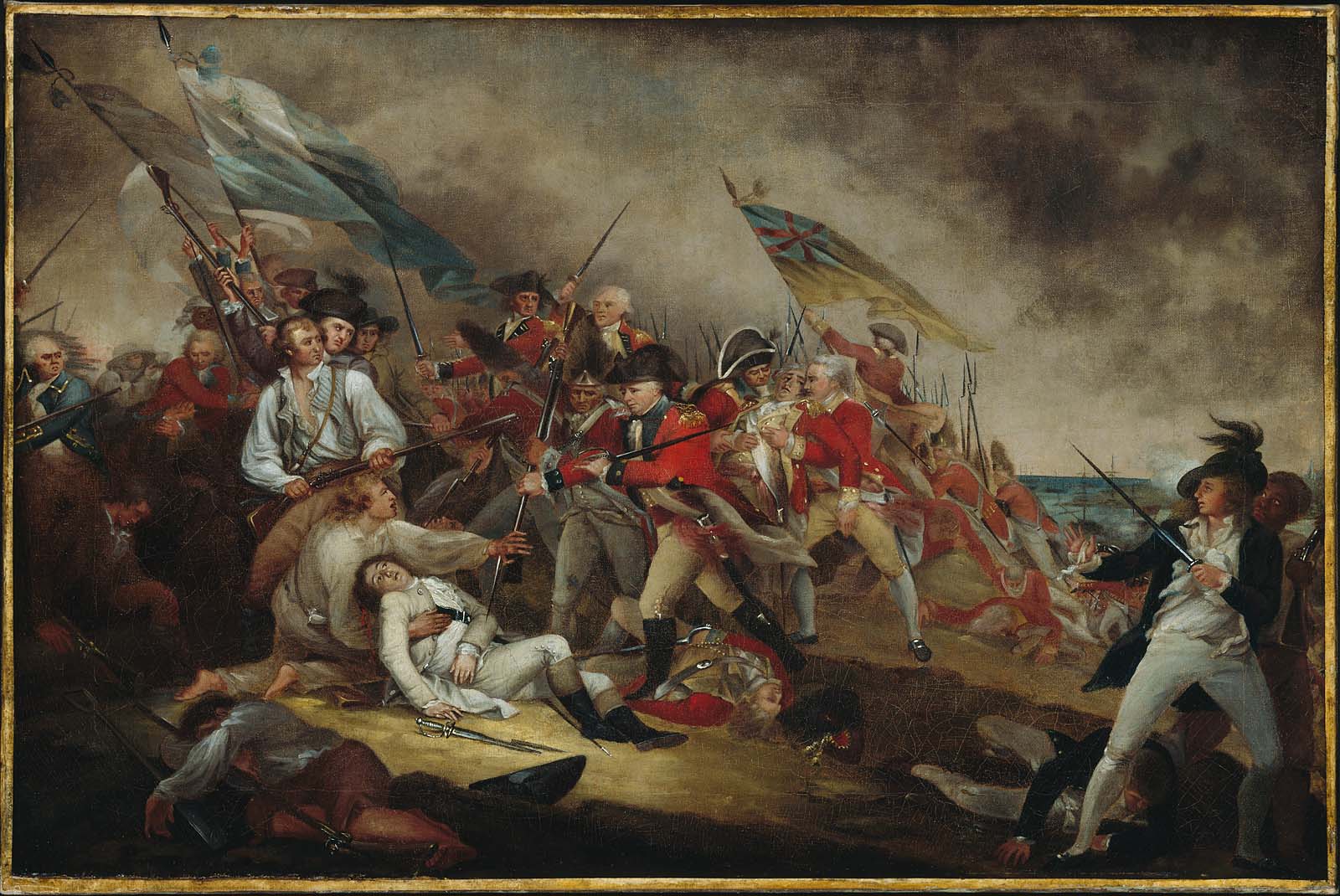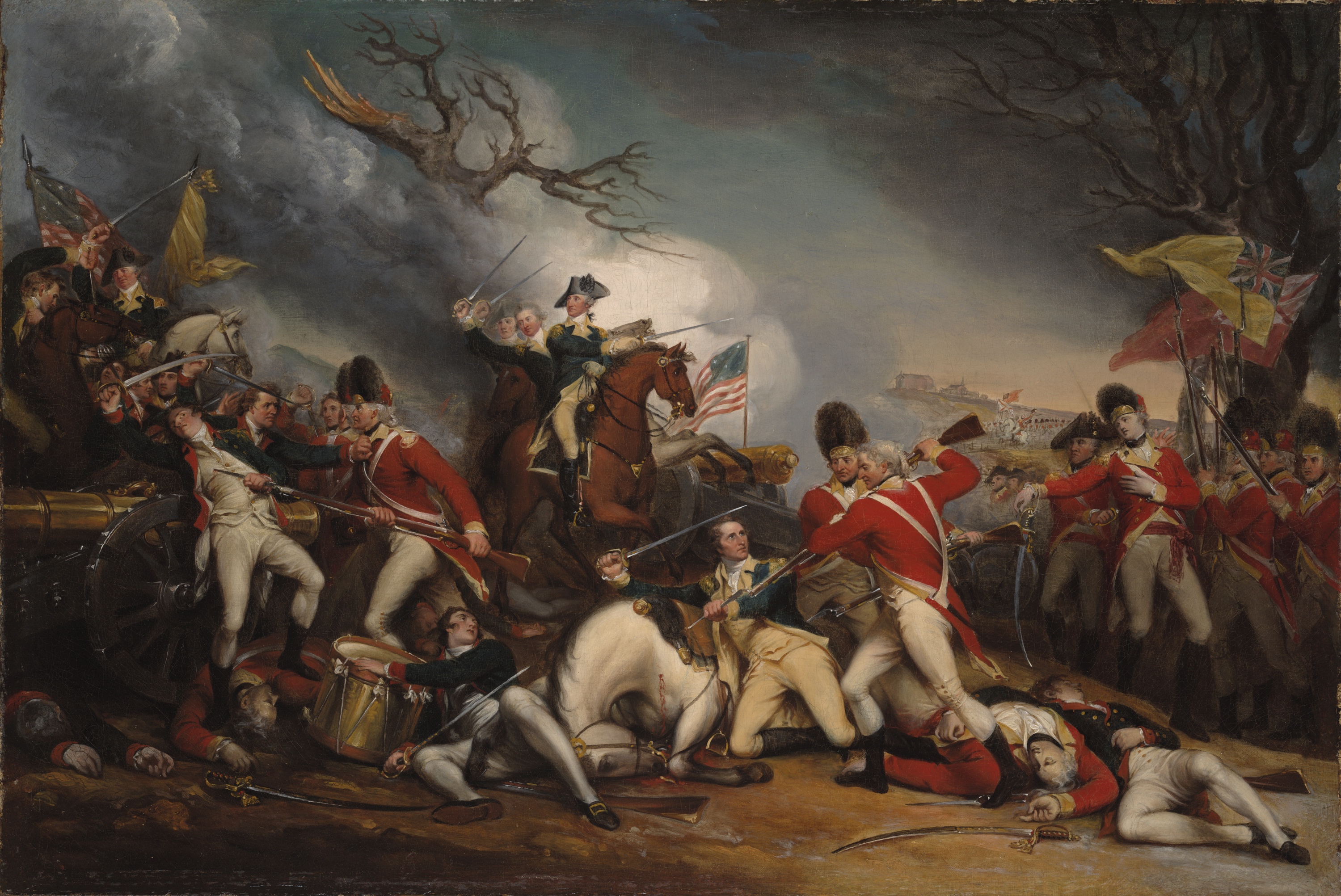Wadsworth Atheneum, Hartford
November 5, 2016 – July 2017
Three historic scenes created by America’s first history painter, John Trumbull, are central to this installation exploring visual interpretation of the Revolutionary War (1775–1783). An additional work by Trumbull is also featured in the exhibition, as well as works by modern artists who revisited the legacy of the war in the 20th century in observance of major anniversaries such as the bicentennial of George Washington’s birth in 1932 and the nation’s bicentennial in 1976.
John Trumbull (1756–1843) served in the Continental Army during the Revolutionary War and later created a series of eight paintings devoted to the subject, explaining once to Thomas Jefferson that he hoped the paintings would “diffuse the knowledge and preserve the memory of the noblest series of actions which have ever dignified the history of man.” After completing a second edition to adorn the rotunda of the United States Capitol in Washington, D.C., Trumbull began a third and final series in 1831. Due to his failing health Trumbull was only able to complete five of the paintings, all of which were purchased by the trustees of the Wadsworth Atheneum. Trumbull’s Revolutionary War scenes were some of the museum’s inaugural objects, and were displayed when the first gallery opened in 1844.
Three of those paintings,
“The Death of General Montgomery in the Attack
on Quebec, December 31, 1775,”
“The Declaration of Independence, July
4, 1776”
and “The Capture of the Hessians at Trenton, December 26, 1776”
are included in “Visualizing American Independence.”
“The Death of
General Warren at the Battle of Bunker’s Hill, June 17, 1775” is on view
in the museum’s Morgan Great Hall,
and “The Death of General Mercer at
the Battle of Princeton, January 3, 1777” is scheduled for loan to a
peer institution.
Trumbull’s role as artist-historian encouraged later generations of artists to visually reinterpret the American Revolution and secure the legacy of its heroes. One of the most frequently portrayed subjects from this period is George Washington, whose image—especially after his death—became so symbolic that memorial portraits elevated him to a divine figure. Many portraits were made into engravings and mass-produced, providing artists with easy accessibility to Washington’s likeness for transfer onto textiles, decorative arts, jewelry, postage stamps, currency, and other objects.
John Trumbull: Visualizing American Independence includes a range of such renditions, including several 19th century ceramic jugs decorated with Washington’s image and a 1975 color lithograph by Alex Katz.




